Publish Date: May 31, 2024 | Keywords: Contemporary EHF 2024, Interface design, Publications, Systems
| Document
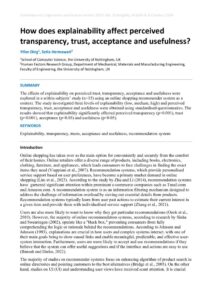
|
Author
Yifan Ding, Setia Hermawati |
Abstract
The effects of explainability on perceived trust, transparency, acceptance and usefulness were explored in a within subjects’ study (n=15) using an online shopping recommender system as a context. The study investigated three levels of explainability (low, medium, high) and perceived transparency, trust, acceptance and usefulness were obtained using standardised questionnaires. |
Publish Date: May 31, 2024 | Keywords: Cognition, Contemporary EHF 2024, Incidents, Manufacturing, Publications
| Document
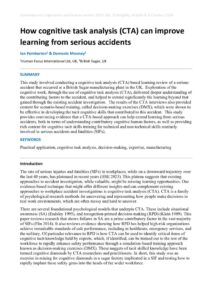
|
Author
Ian Pemberton & Domonic Mooney |
Abstract
This study involved conducting a cognitive task analysis (CTA) based learning review of a serious accident that occurred at a British Sugar manufacturing plant in the UK. Exploration of the cognitive work, through the use of cognitive task analysis (CTA), delivered deeper understanding of the contributing factors to the accident, and helped to extend significantly the learning beyond that gained through the existing accident investigation. The results of the CTA interviews also provided content for scenario-based training, called decision-making exercises (DMX), which were shown to be effective in developing the tacit cognitive skills that contributed to this accident. This study provides convincing evidence that a CTA-based approach can help extend learning from serious accidents, both in terms of understanding contributory cognitive human factors, as well as providing rich content for cognitive tacit skills training for technical and non-technical skills routinely involved in serious accidents and fatalities (SIFs). |
Publish Date: May 31, 2024 | Keywords: Contemporary EHF 2024, Publications, Transportation, Usability
| Document
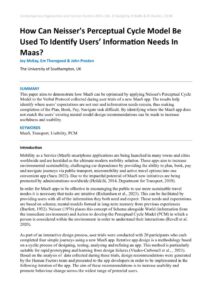
|
Author
Joy McKay, Em Thorogood & John Preston |
Abstract
This paper aims to demonstrate how MaaS can be optimised by applying Neisser's Perceptual Cycle Model to the Verbal Protocol collected during user trials of a new MaaS app. The results help identify where users’ expectations are not met and information needs remain, thus making completion of the Plan, Book, Pay, Navigate task difficult. By identifying where the MaaS app does not match the users’ existing mental model design recommendations can be made to increase usefulness and usability. |
Publish Date: May 31, 2024 | Keywords: Contemporary EHF 2024, Nuclear, Publications, Safety
| Document
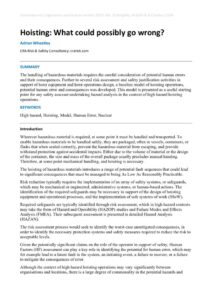
|
Author
Adrian Wheatley |
Abstract
The handling of hazardous materials requires the careful consideration of potential human errors and their consequences. Further to several risk assessment and safety justification activities in support of hoist equipment and hoist operations design, a baseline model of hoisting operations, potential human error and consequences was developed. This model is presented as a useful starting point for any safety assessor undertaking hazard analysis in the context of high hazard hoisting operations. |
Publish Date: May 31, 2024 | Keywords: Aviation, Contemporary EHF 2024, Human factors integration, Incidents, Publications
| Document
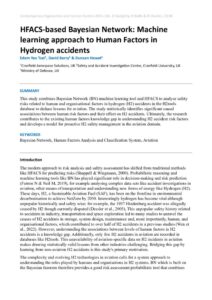
|
Author
Edem Yao Tsei, David Barry & Duncan Hewat |
Abstract
This study combines Bayesian Network (BN) machine learning tool and HFACS to analyse safety risks related to human and organisational factors in hydrogen (H2) accidents in the H2tools database to deduce lessons for aviation. The study statistically identifies significant causal associations between human risk factors and their effect on H2 accidents. Ultimately, the research contributes to the existing human factors knowledge gap in understanding H2 accident risk factors and develops a model for proactive H2 safety management in the aviation domain. |





